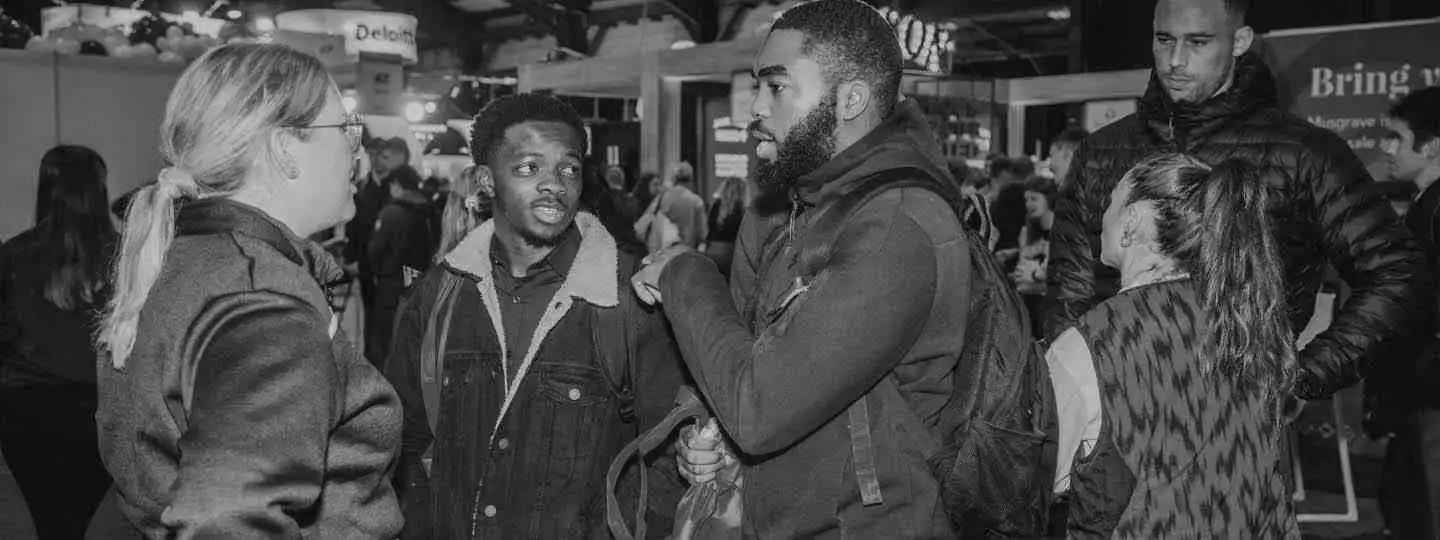Interviews and assessment centres
'Give an example of your lateral thinking.' Tricky graduate interview question
25 Jan 2023, 13:38
Find out what employers really want when they ask you questions about your ability to think laterally and how lateral-thinking skills are connected to your creativity, use of initiative and problem-solving abilities.

In the stress of a graduate job interview situation it’s easy to be thrown by questions you haven’t prepared for. Here’s a tricky question that might catch you out if you haven’t already thought about it in advance: ‘Can you give us an example of a difficult situation where you had to think laterally to get out of it?’
Short on time? Watch our one-minute guide to lateral thinking
In our video, discover:
- what lateral thinking really means
- an example of lateral thinking
- a technique to best answer the interview question ‘give an example of your lateral thinking’.
Our targetjobs careers expert defines lateral thinking.
What is lateral thinking?
Lateral thinking is the ability to use your imagination to look at a problem in a fresh way and come up with a new solution. Without employees putting lateral thinking skills into practice, companies can’t innovate and create new products – they’re just stuck with doing the same old thing, perhaps more efficiently than before, but they won’t be able to lead the way. Any company that wants to stay ahead of the competition needs to recruit graduates who are capable of lateral thinking.
This skill is highly prized in creative industries such as the media and publishing, and is valued across a range of different industries and professions, including retail, law, management consultancy and IT. Any graduate who takes up a management role is likely to need to draw on lateral thinking skills to solve problems and take forward the work of the team. Lateral thinking can also be assessed using psychometric tests.
Examples of lateral thinking: first, unpick your tricky interview question
‘Can you give us an example of a difficult situation where you had to think laterally to get out of it?’ is actually two questions in one. You need to come up with an example of a difficult situation – a problem or challenge of some kind. Then you need to explain how you thought creatively to come up with a fix or solution – combining problem solving with creativity.
This question is not asking you:
- Are you capable of coming up with a solution to a straightforward logical problem?
- Do you go in for off-the-wall creative daydreaming that has no particular application?
Why are recruiters asking about your ability to solve a problem using lateral thinking?
Your answer will give the employer some insight into the following:
- Can you think in an innovative way?
- Are you capable of coming up with a creative solution to a problem?
- Can you overcome difficulties when the answer isn’t immediately obvious from all the information that is already available and from the way things have been done before?
- How do you cope when you’re up against a challenge you’ve never previously experienced?
How to answer tricky graduate interview questions about lateral thinking
The good thing about being asked about your powers of lateral thinking is that there is, by definition, no one right answer to a problem that has to be solved creatively.
It’s also a lot easier on your nerves to be asked to come up with an example of lateral thinking of your own choice, rather than to be put on the spot by an off-the-wall interview question about how you’d escape from a blender if you were inside it and three inches high, or whatever.
As you prepare for your interview, think about real-life problems that you’ve overcome. Here are some possible examples:
- A difficult customer at work, or disagreement with a landlord.
- A student society you were involved in that was struggling financially.
- A team you were part of that wasn’t doing well, or where there was a conflict that needed resolving.
- A deadline you realised you couldn’t meet.
- Being lost somewhere, mislaying something essential, or having travel problems.
- Running low on cash and needing to come up with a way to make more.
- Needing to find work experience in a profession you are interested in but know little about.
Most real-life problems – especially ones involving other people – call for a creative approach and some lateral thinking. Try to think of situations that were heading for failure until you came up with a new approach that turned them around.
For example, if you’ve been involved with a student society that was struggling financially, a logical solution to the problem might be to seek to cut costs. If you use lateral thinking, however, you might come up with a great new fundraising idea, devise a novel initiative to boost membership, or approach a contact you’ve made through some other means to secure sponsorship.
When you hear about students who have come up with original ways of grabbing employers’ attention, the ruse they’ve used is often testament to their powers of lateral thinking. Careers planning in itself often involves lateral thinking, especially if it’s not immediately obvious to you what you want to do when you graduate.
How can I develop lateral thinking skills?
Lateral thinking may come more naturally to some people than to others. But with practice, this way of thinking can be worked on prior to graduate job interviews.
Practising techniques that challenge you to think in a more creative way can open avenues of thought that a vertical thought process may otherwise close off.
One such technique is to approach a problem by first considering what actions you should not take. This approach can help you to quickly rule out unhelpful ideas that may crop up later and it can be used as a process of elimination to lead yourself to better ideas.
A second ploy that can help you to think of solutions more laterally is to give some consideration to ideas that you would normally filter out straight away. To do this, set yourself a short timer, perhaps ten minutes, and use this time to write down all the ideas that come to mind in the moment that you think of them, before you have a chance to filter. At the end of the timer, read your ideas. Not all of them will be appropriate to the problem. But there may be one or two potential solutions that you otherwise would’ve discarded immediately.
Once you get used to solving problems in different areas of your life using techniques such as these, make a note of examples and reflect on them when you’re preparing for a job interview.
Get help on answering more difficult interview questions with our article on the top nine tough tricky interview questions and answers.
You can practise your answers to tricky interview questions using resources from our partners at Shortlist.Me.
targetjobs Editorial advice
This describes editorially independent and impartial content, which has been written and edited by the targetjobs content team. Any external contributors featuring in the article are in line with our non-advertorial policy, by which we mean that we do not promote one organisation over another.


.webp)





